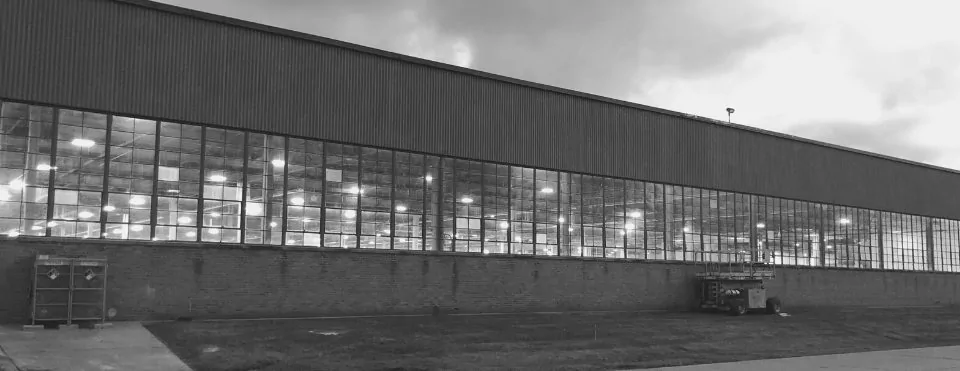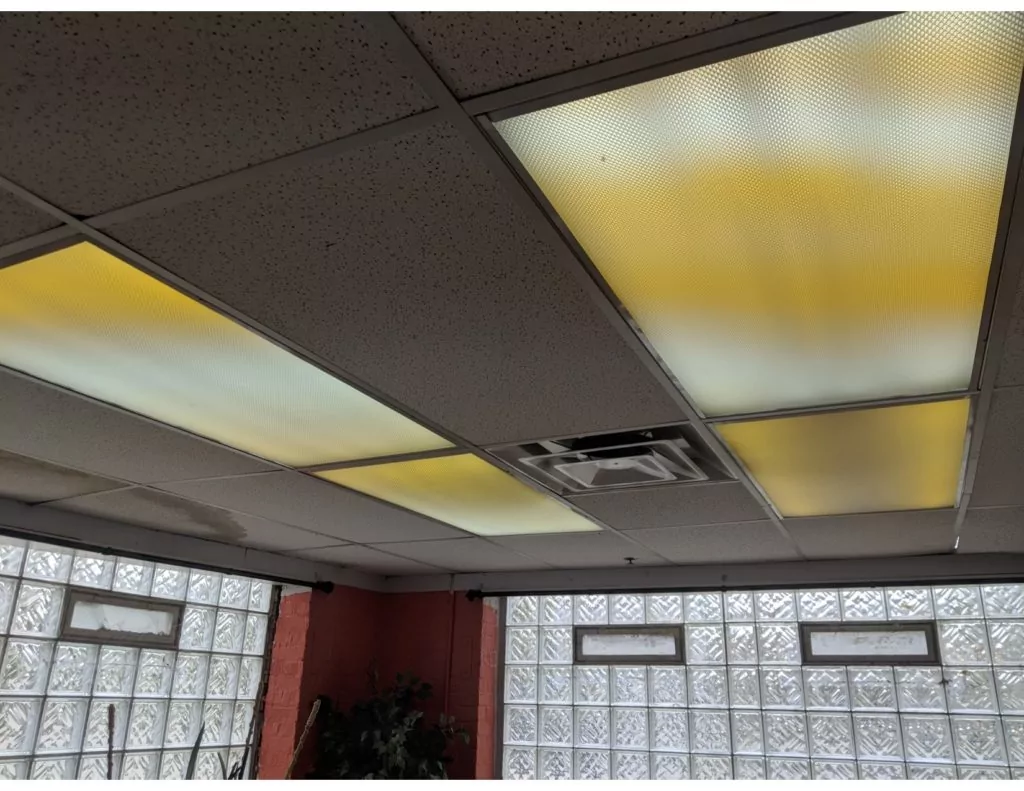Convert Fluorescent with Ballasts to LED with Drivers
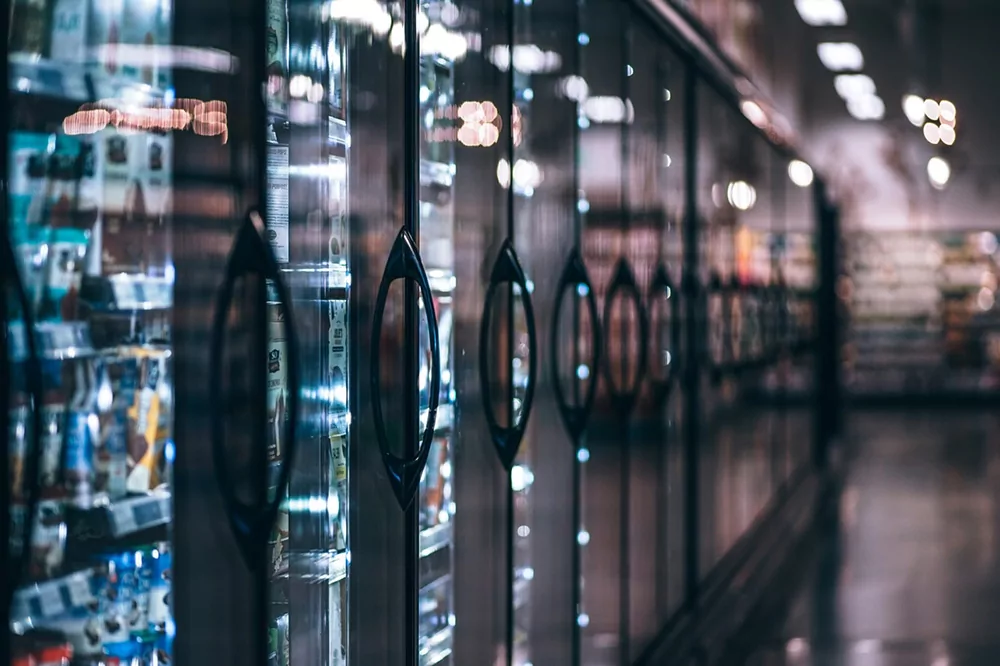
Nov 22 2020
Most lighting and lamps for commercial and municipal buildings over the past 50 years have been fluorescent lighting. New construction is entirely made of LED, which lasts longer and is more efficient.
However, converting or retrofitting old fluorescent to LED can be easy, if done correctly. It can also often be helped financially with a utility rebate system, designed to help save energy and offset the costs for doing so. Unfortunately, we have also seen many examples of these retrofits done incorrectly, making it more expensive to get it fixed and improved. Replacing fluorescent light ballasts is important, efficient, and has a very low return on investment, both in terms of cost and time.
How Does a Fluorescent Ballast Work?
Fluorescent lighting uses a ballast, which is a device that limits the current for the lamp to property start and illuminate. If you hook a fluorescent light up to the normal electricity of a building, the lamps will not work. A ballast creates the proper current needed to light the fluorescent light. It typically does this by using
Older T12 fluorescent lamps, usually larger in diameter, typically use a magnetic ballast. If you hold up a modern smart phone camera, you will see moving yellow lines in the camera to show the visual disturbance created by the magnetic ballast.
More modern ballasts are electronic and can operated a T8 fluorescent lamp. These systems use less energy than a T12 magnetic lamp and ballast system, but still far more than a LED system. T8 systems are 25-30% more efficient that T12s systems.
A fluorescent ballast plays a crucial role in illuminating your space by managing the power needed for a fluorescent lamp to work. Here’s how it works:
Essential Functions:
- Regulates Voltage and Current: Fluorescent lamps need a surge of high voltage to start, typically around 70-120 volts, followed by a lower voltage to maintain operation. The ballast acts as a transformer, initially providing the high voltage to ignite the lamp and then stabilizing the current to prevent overheating and burnout.
- Preheats the Filament (in older lamps): Some traditional fluorescent lamps, like T12s, utilize filaments similar to incandescent bulbs. The ballast provides a small current to preheat these filaments before ignition, allowing them to emit electrons needed for the gas ionization process.
- Limits Current Flow: Unlike incandescent bulbs, fluorescent lamps have negative resistance, meaning they’d continuously draw more current until the source can’t provide anymore. The ballast acts as a positive resistance, counteracting this and limiting the current to a safe level, ensuring stable operation and longer lamp life.
Traditional Magnetic Ballasts
Magnetic ballasts, the workhorses of older fluorescent lighting, operate through a fascinating interplay of magnetism and electricity. Imagine a coiled wire dance, where one coil (the primary winding) receives incoming electricity and generates a magnetic field. This field, like a magical hand, reaches out and tickles another coil (the secondary winding), inducing a current within it.
This induced current isn’t just any current, though. It’s a high-voltage pulse, perfect for igniting the fluorescent lamp. The reason? The magnetic field changes rapidly, creating a “kick” of electricity in the secondary coil. This pulse slams into the lamp’s electrodes, jolting them into action and releasing electrons that trigger the light show within.
But the magnetic field’s magic doesn’t stop there. Once the lamp is lit, the ballast transforms into a current regulator. It acts like a traffic cop, controlling the flow of electricity so the lamp doesn’t get overwhelmed and burn out. By adjusting the magnetic field’s strength, the ballast ensures a steady stream of current, keeping your fluorescent lamp humming along happily for years to come.
So, the next time you flick on a fluorescent light and hear that familiar hum, remember the silent ballet of magnetism and electricity happening inside, thanks to the trusty magnetic ballast. It’s a testament to the ingenuity of human engineering, even in its older forms.
Traditional Electronic Ballasts
Electronic ballasts ditch the magnetic dance for a high-tech disco of transistors and circuits. Instead of relying on coils and magnetism, they use sophisticated electronics to achieve the same goals as their magnetic counterparts: igniting the lamp and regulating current.
Imagine a tiny orchestra conductor, constantly adjusting the voltage and current to the lamp’s needs. That’s the electronic ballast in action. It works in two stages:
- Ignition: Similar to a DJ dropping a beat, the ballast sends a high-voltage pulse to the lamp electrodes, jolting them awake and releasing electrons. This initial burst gets the party started, but it’s not enough to keep the light going.
- Regulation: Now, the ballast acts like a sound engineer, fine-tuning the current flow. It uses transistors and microchips to constantly adjust the voltage, ensuring the lamp receives just the right amount of energy to stay bright and stable. This not only saves energy but also prevents flickering and extends the lamp’s lifespan.
Electronic ballasts offer several advantages over their magnetic cousins. They’re smaller, lighter, and quieter, and they provide more efficient and flicker-free operation. They can even be programmed to dim the lights or adjust the color temperature, adding versatility to your lighting setup.
So, the next time you see a sleek, modern fluorescent fixture, remember the electronic ballet happening inside. It’s a testament to the power of technology to make even the mundane magical.
The Ignition Process:
- Power On: When you turn on the switch, the ballast provides a high voltage pulse through the lamp electrodes.
- Electrode Emission: This high voltage excites the gas atoms in the lamp, causing them to release electrons.
- Plasma Formation: The free electrons collide with other gas atoms, further ionizing them and creating a conductive plasma inside the tube.
- UV Light Emission: Electrons in the plasma excite the mercury atoms, which emit ultraviolet (UV) light invisible to the eye.
- Visible Light: The UV light strikes the phosphor coating on the inner surface of the tube, causing it to fluoresce and emit visible light.
The ballast continues to monitor and adjust the current to maintain stable operation and ensure your fluorescent lamp illuminates your space efficiently.
How Do Drivers Work with LEDs?
Now that we understand the basics of fluorescent ballasts, we should dive in a bit to LED drivers. In the world of LEDs, the term “driver” plays a crucial role beyond just being a connection wire. It’s actually a power regulator specifically designed to keep these tiny light-emitting diodes happy and humming! Here’s how it works:
The Magic of Power Conversion:
- AC to DC: Unlike your regular incandescent bulb, LEDs require low-voltage, direct current (DC) to shine. But most household electricity is high-voltage, alternating current (AC). The driver acts as a translator, converting AC to the appropriate DC voltage for the LEDs.
- Current Control: LEDs are sensitive creatures. Their brightness and lifespan depend on a precise amount of current. The driver acts as a babysitter, ensuring a steady current flow even as temperature or other factors try to disrupt it. This prevents them from getting too hot and burning out – a phenomenon known as thermal runaway.
Beyond the Basics:
- Dimming: Some drivers can be hooked up to dimming switches, allowing you to adjust the LED brightness. They achieve this through clever techniques like pulse width modulation (PWM), where the current is briefly switched on and off to control overall brightness.
- Protection: Drivers can act as the bouncers of the LED world, offering surge protection and filtering out electrical noise that can harm the delicate diodes.
- Types of Drivers: There are two main types: constant-current drivers that focus on precise current flow, and constant-voltage drivers that maintain a stable voltage while the current adjusts based on the LED’s needs.
In short, the driver is the unsung hero of the LED world. It ensures the proper power, protects the LEDs, and even lets you control LEDs in a way that was often not possible with fluorescent lamps.
Converting to LED from Fluorescent Lighting
You can fairly easily replace a fluorescent light ballast to a LED system with little cost on materials and some labor. An LED systems is 70-80% more efficient than a T12 ballast and lamp, and 50-60% more efficient than a T8 fluorescent system. To boot, the LED system can last 70,000 hours when done correctly, leading to long lasting maintenance savings in both materials and labor.
There are two basic approaches to replacing a fluorescent light, you can retrofit it with a tubular LED, or you can replace it with a new fixture. New fixtures are often nice because everything is new, and they can typically have an option for a sensor. However, not everyone has the budget to put in new light fixtures, so tubular LED (TLED) is a great cost effective approach.
Type C Approach for Replacing the Fluorescent Light Ballast
If you identify a T12 and magnetic ballast system, it is best to replace the lamp and ballast system together. You can do this by converting the older ballast to an external LED driver, and the sockets can be reused to house a LED tube compatible with the LED driver. This is called a Type C application and all wiring is typically the same and easy to do. This video shows a few of our Verde electricians replacing an old fluorescent light fixture with type C TLEDs and an external driver.
This keeps the system with two components – a driver and a TLED. This has a longer life expectancy, because the heat from the driver is separated from the LED. Since drivers fail with heat, this system approach is strongest in our opinion, leading to longer lasting lighting with less maintenance.
Type B Approach for TLEDs
Another option is to rewire the system to the sockets with standard 110V electricity, and then wire in a LED tube than has an internal driver. This is called a Type B application. This is fairly inexpensive in terms of material, but does not typically last as long as a Type C system. This is because the driver that regulates the electricity is inside the TLED, with less places for heat dissipation. This is the most popular approach across the United States at the moment, mostly due to lower cost of materials. These type B tubes are also fairly inexpensive, and that makes it easy to replace them when they fail.
It is also something really to pay attention to in terms of safety, as the sockets have higher energy draw than a typical fluorescent system. There has often been concern around this in the industry, since it is different than the traditional history of fluorescent light sockets. However, this approach is common enough today that this type of retrofit is safe.
We also find Type B retrofits when replacing fluorescent light ballasts leads to a lower incentive from our local utility, so when combined with the lower life expectancy, we have seen very few retrofits of this style with our clients in Illinois.
Reusing the Fluorescent Ballast for LED – Type A
It is possible with T8 electronic ballasts to work with compatible LED tubes. This is called a Type A application, and the LED tube is designed to work off the current ballast. These systems are incredibly easy to do, just as simple as changing a lamp. However, the system will only work as long as the current LED light ballast lasts. The energy savings is the same – but the maintenance will not be reduced by this approach. We find many of our clients that are on a budget will consider this, but often regret it because of the ballast failure over time. While ballasts should actually fail less often than before because of the lower draw on the ballast, they were already through most of their useful life unless they were relatively new ballast.
If you have the patience and access to a good distributor for lamps, this process can be smooth and easy. However, if you purchase a few hundred of these and they are not compatible or fail quickly, it can be a frustrating experience. We always recommend putting a few lamps in as a sample to start for a few days and nights, making sure it works. While heavy ballast failure is rare, it does happen and can take a good partner to resolve.
Does Brand Matter with Ballasts and Drivers?
In a word – yes. Verde has used a lot of products over the years. We have mostly used Signify Advance, formerly known as Philips. Not only are they a world class company with decades of experience in manufacturing, but they really stand behind their products. We have found less product failures, and when they do rarely occur, Signify stands behind their product and honors their warranty. You know they will be around in 10 years, unlike a smaller company.
They also build on previous generations of products, so each product is a little better and a little more user friendly. We find they pay attention to small details, like packaging, warehousing and shipping efficiency. For a company like ours that buys 10,000 drivers at a time – these little details make a big difference and helps us pass long savings to our customers.
In general, we have also had good experience with GE and other large brands. We also pull a lot of products out that have failed, and often find second and third tier brands that fail at a higher rate. We have had really mixed luck with Chinese manufactured brands. While some of them are high quality and we have visited their factories in China to see where the better quality comes from – we have decided for the most part to stay with Signify.
Conclusion
New fixtures are always a nice option for a conversion to LED, as they improve the space aesthetics. However, a retrofit can accomplish the same energy savings and maintenance reduction at a fraction of the cost. Verde can help you analyze, purchase or even install these TLEDs if you reach out to our team for an energy efficiency assessment!
Featured Posts
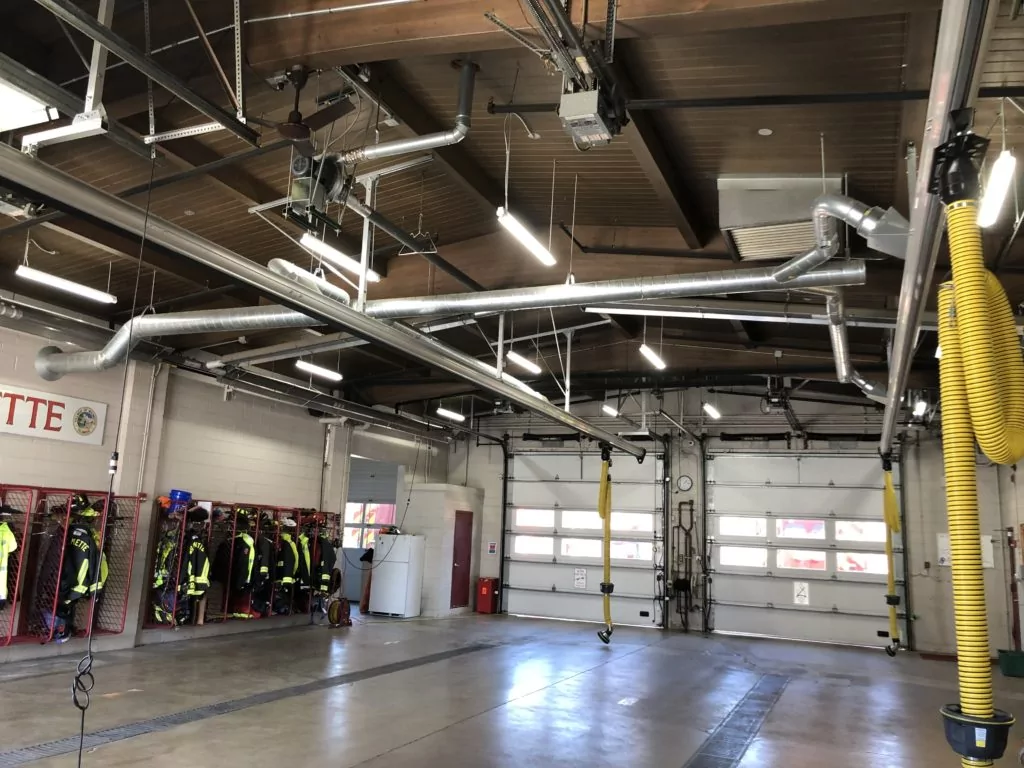
Mar 15 2021
Energy Savings Formula
In 2002, I became a firefighter in the north suburbs of Chicago. I was young and idealistic - loving almost every part of the job. However, I had another secret passion - sustainability. In addition…
Continue Reading >

May 02 2019
Verde Energy Efficiency Experts 10 Most Sustainable Companies in Chicago
In our energy efficiency consulting firm, we constantly look for inspiration from local companies that lead and innovate in clean energy and sustainability. Not all companies have billion dollar budgets, but that doesn’t mean that…
Continue Reading >
Related Articles

May 30 2024
Energy Efficiency Lighting Systems in Hotels
Lower Energy Cost Hospitality with LED Lighting Systems In today's environmentally conscious world, hotels are increasingly looking for ways to reduce their impact. Energy-efficient lighting systems are a powerful tool in this effort, offering a…
Continue Reading >
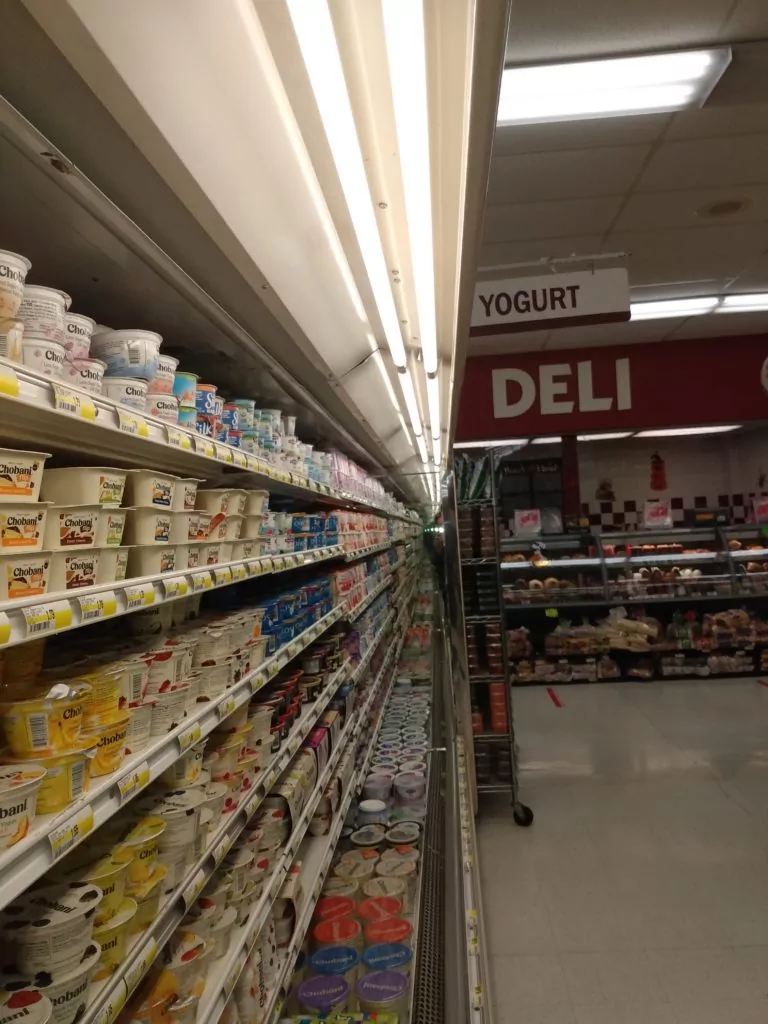
Aug 29 2023
The Importance of Converting to LED Display Case Lighting
Light emitting diode (LED) lighting is quickly becoming the standard for display case lighting. This is due to a number of advantages that LED lights have over traditional lighting technologies, such as incandescent and fluorescent…

